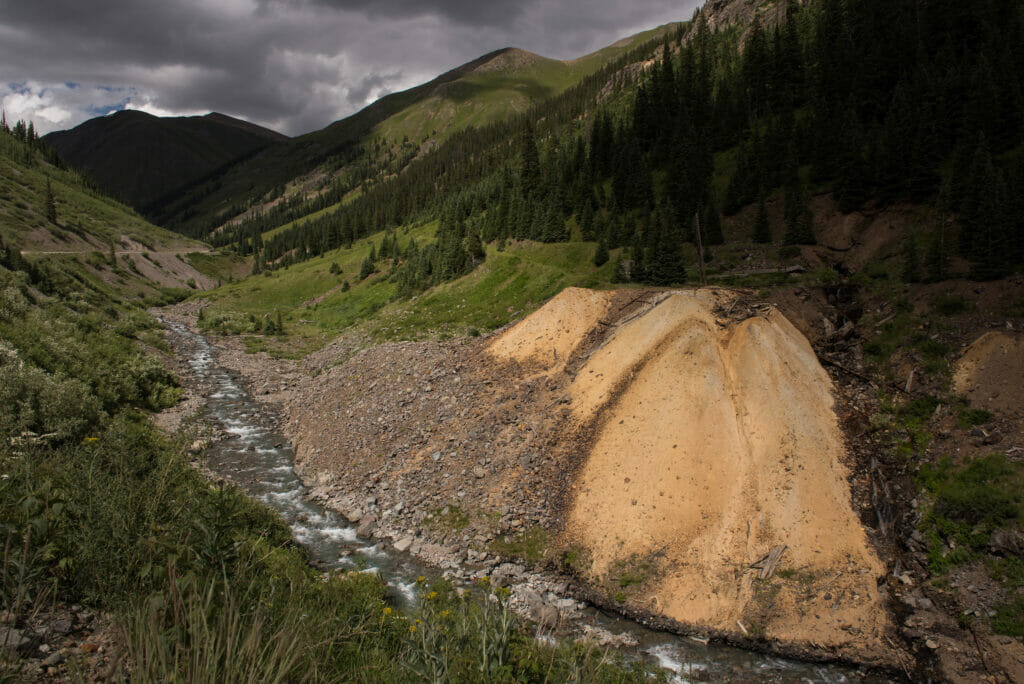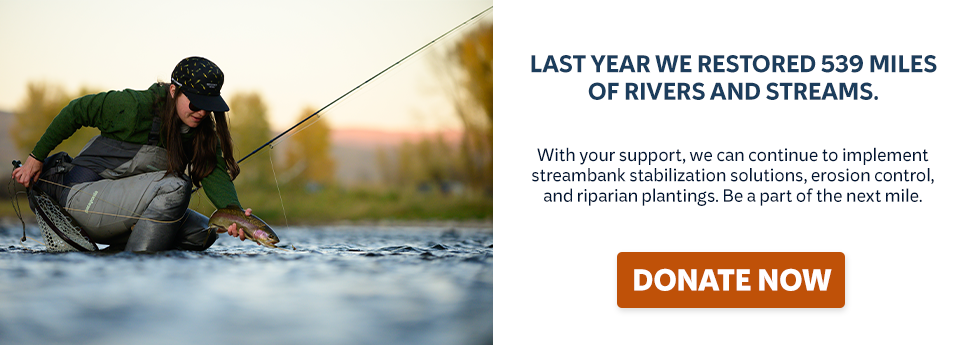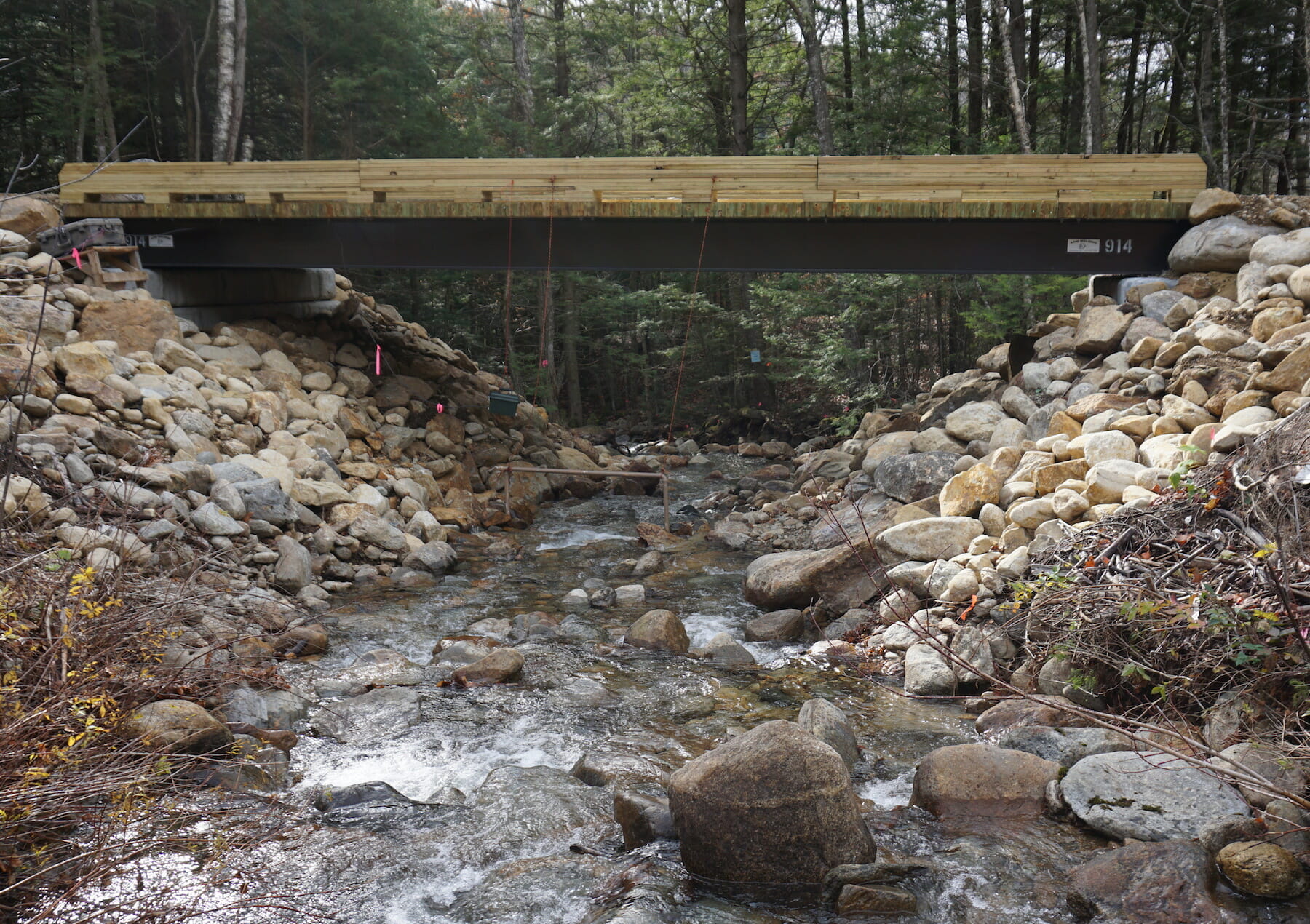Let’s face it: the word infrastructure suggests concrete, rebar and L.A. freeway interchanges rather than productive coldwater fisheries and a fine day of wading a clear, cold trout stream. Yet infrastructure is mission-critical for Trout Unlimited. That’s why TU has launched groundbreaking programs such as the Salmon SuperHwy in Oregon.
The infrastructure bill includes $1 billion for right-sizing and replacing fish-blocking culverts, to build on success of the Salmon Superhighway in Oregon and similar efforts in Washington, as championed by Sen. Maria Cantwell. Salmon and steelhead will similarly benefit from the $172 million for NOAA’s Pacific Coastal Salmon Recovery Fund, $491 million for NOAA’s Habitat Restoration and Community Resilience grants, and $492 million for NOAA’s National Ocean and Coastal Security Fund grants.
Both man-made (think roads culverts, and irrigation ditches) and natural (e.g., healthy, functional watersheds) infrastructure delivers a variety of important benefits for people and trout and salmon.
On the flip side, old, poorly maintained infrastructure delivers a Pandora’s box of ailments to people and fish. And in many places around the country, that’s what we’ve got nowadays.
The bipartisan Infrastructure Investment and Jobs Act, just passed by the U.S. Senate, is a massive package of legislation that would deliver a major shot in the arm to trout and salmon conservation efforts across the country. This bill would rebuild, improve and restore America’s infrastructure through a variety of programs, many of which directly support TU’s water, restoration, forest health and mine remediation efforts.
Chris Wood, president and CEO of TU, calls the infrastructure bill “potentially transformational” in its ability to help the nation address the impacts of climate change, including some of the worst impacts on trout and salmon.
Sen. Joe Manchin, who was a key negotiator on the Act, noted in his remarks on Senate passage that “Groups like Trout Unlimited have been working with the Forest Service to improve fish habitat, and ultimately make fishing better in streams in West Virginia. This bill authorizes $80 million for work like this in West Virginia and across the country.”
The bill reflects TU’s many years of work with our partners and Congress to address some of the most stubborn challenges for coldwater conservation, including: improving fish passage past old dams; reducing pollution leaching from old mines; restoring national and state forest lands to sustain productive river systems that provide water supply and reduce the risk of uncharacteristic wildfire.
Laura Ziemer, TU’s senior counsel and water policy advisor, says the legislation “reflects the understanding—which TU has championed for years—that our landscapes and waterways are as much a fundamental part of the nation’s infrastructure as bridges and dams. And it directly tackles the some of the biggest challenges to our infrastructure posed by climate change.”
A closer look at the package shows how some of TU’s highest federal policy and funding priorities are core components of the current definition of—and funding for—infrastructure.
Importantly, the bill deals with abandoned mine remediation—a top TU priority for many years. It reauthorizes the Abandoned Mine Reclamation Fund, the principal source of funding for cleaning up old coal mines dribbling toxic waste into trout streams across the country, for another 13 years. Additionally, it establishes a new hardrock mine remediation program for cleaning up abandoned hardrock mines across the West, and provides $3 billion in funding.

Another significant challenge for trout and salmon is the presence of aging dams. On rivers from the Penobscot to the Snake to the Klamath, improving fish passage by upgrading or removing dams is a very high priority for TU. The infrastructure bill provides a major boost to such efforts. Specifically, the bill provides:
- $753 million to encourage grid resilience and environmental enhancement at current hydro facilities
- $800 million for rehabilitation of dams with high hazard potential and safety projects to maintain, upgrade and repair dams
- $800 million for river restoration through the removal of dams and in-stream barriers with the consent of dam owners.
Another provision in the bill concerns natural infrastructure, management of wildfire, and ecosystem restoration. Of note, it would codify and provide dedicated funding for the U.S. Forest Service’s Legacy Roads and Trails program. Rehabilitating and right-sizing the Forest Service’s transportation infrastructure—375,000 miles of roads and 143,000 miles of trails—is a high priority for TU due to the widespread adverse impacts of poorly maintained roads and trails on trout and salmon streams.
In its Ecosystem Restoration language, this section of the bill provides $80 million for the Aquatic Restoration Program—another TU priority.
Yet another section of the bill concerns water infrastructure in the West, and recognizes the foundational role of water infrastructure and watersheds in preparing for water security as conditions continue to get hotter and drier. TU strongly supports its $400 million investment in the WaterSMART program. The bill also would invest $100 million for watershed management projects; $250 million for aquatic ecosystem restoration and protection projects; $300 million to implement the Colorado River Basin Drought Contingency Plan; $1 billion for water reuse and recycling; and $250 million for water desalination.
It’s possible that the term “infrastructure” makes your eyes glaze over—unless you’re an engineer. But when you think about how our nation’s man-made and natural infrastructure can help or hurt trout streams, it starts to get more interesting.
The Infrastructure Investment and Jobs Act now moves to the House—stay tuned for more information on how you can help support its passage into law.
Read TU’s press release on the bipartisan Infrastructure Investment and Jobs Act here.



